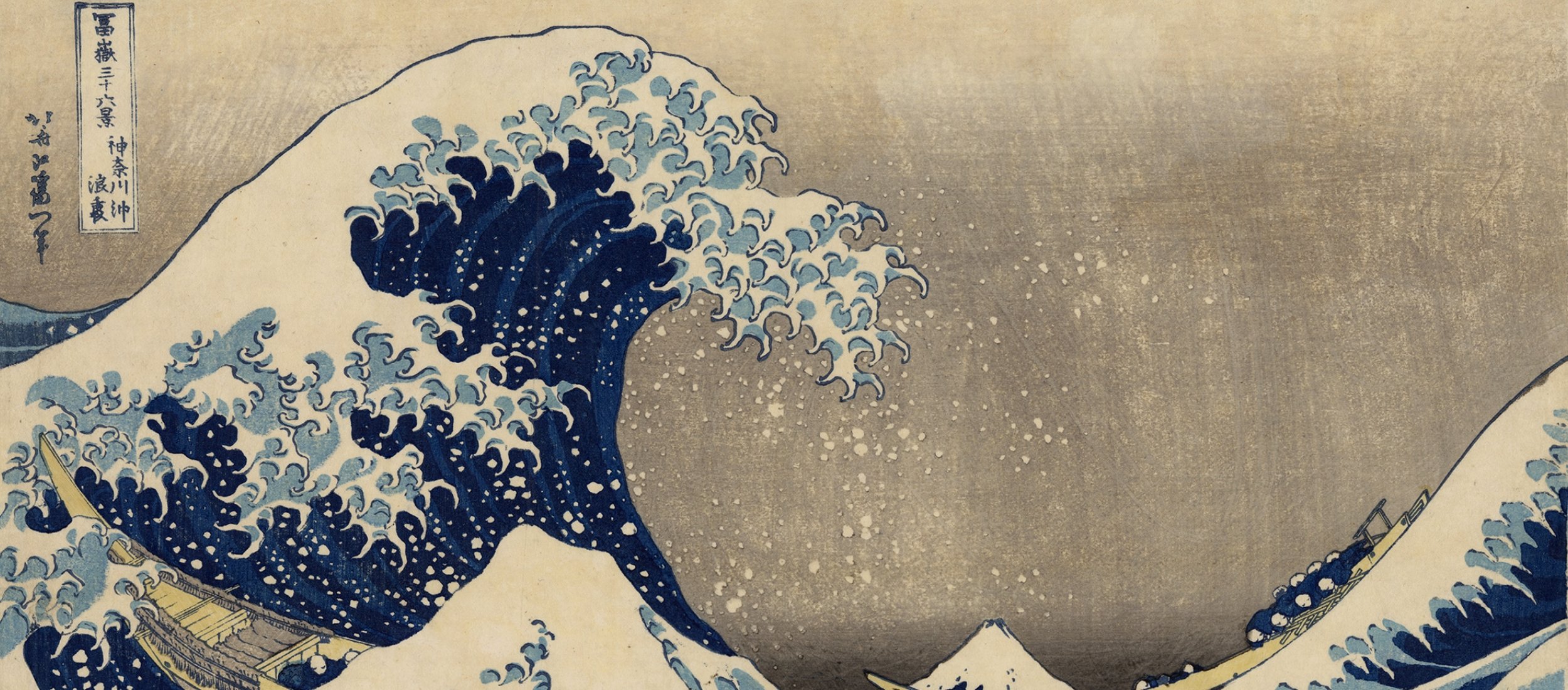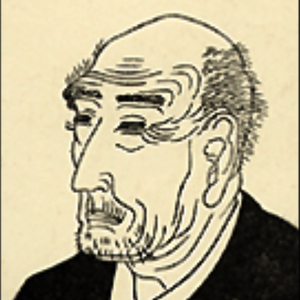HOKUSAI
COLLECTING JAPANESE PRINTS FEATURED UKIYO-E ARTISTKatsushika Hokusai
1797 - 1858
Profile at a Glance:
Utagawa School Ukiyo-e artist
Produced some of the most iconic landscape designs in Ukiyo-e; also created kacho-e
Hoeido Tokaido was his first landscape series executed and is considered his first masterpiece
Produced several different Tokaido series
One Hundred Famous Views of Edo was his last series; considered among his best work
The Japonisme that swept the world during the nineteenth century and exerted its influence over European expressionism would not have been possible without the legendary ukiyo-e artist Katsushika Hokusai. Hokusai was known by at least thirty names during his lifetime. Although the use of multiple names was a common practice of Japanese artists of the time, the numbers of names he used far exceeds that of any other major Japanese artist. His name changes are so frequent, and so often related to changes in his production and style, that they are useful for breaking his life up into periods.
Born in 1760 in the Honjo district of Edo, Hokusai began his career at the age of nineteen when he entered the ateliers of Katsukawa Shunsho, an artist specializing in actor prints. Over the next fifteen years, Hokusai (operating under the name Shunro) trained extensively under Shunsho, learning woodblock printmaking and painting techniques. Upon breaking with the Katsukawa school in 1794, the young artist began signing his works as Sori, in reference to the Rinpa-style artist Tawaraya Sori. Three years later, he changed his name to Katsushika Hokusai, a name under which he would produce a great number of paintings and rise to become a premier illustrator of yomihon (a subgenre of Edo literature). By the age of fifty-one, Hokusai (going by the pen name Taito) had transitioned towards edehon (art manuals) as well as popular manga.
The subsequent "Iitsu" period (c. 1810–1819) was marked by the production of a variety of print series, including Thirty-Six Views of Mt. Fuji, bird and flower prints, Sino-Japanese classics, and illustrations of ghost stories. These particular prints firmly established Hokusai's reputation as an artist. The apex of his career, known as the Gakyo Rojin, or Manji period, saw the amalgamation of Edo-based art school techniques into a uniquely original style. Katsushika Hokusai continued to produce paintings, prints, sketches, and manga until his death in 1849 at the age of ninety.





